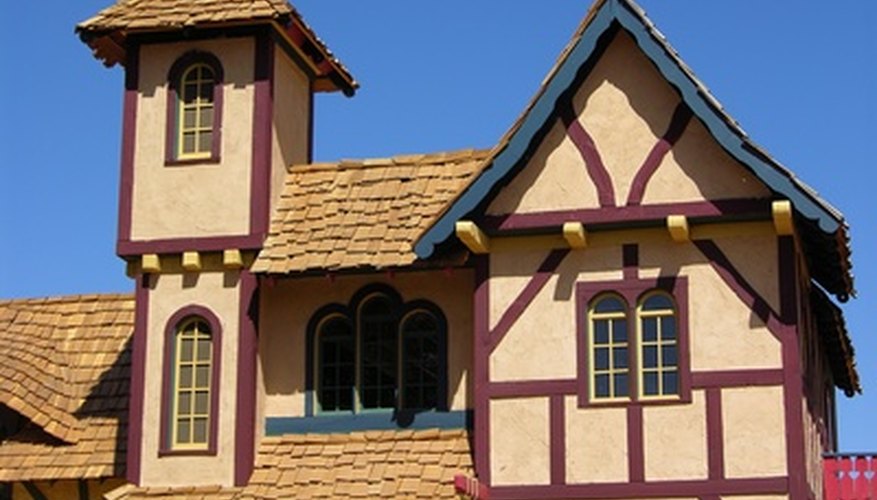Wattle construction was used extensively in Europe during the Tudor period. The materials are easy to obtain and less expensive than brick or stone. Made of wood, sticks and mud, this building material has been replaced with more durable products, but examples can still be found throughout Europe. Building a model out of traditional wattle and daub can be done with common craft items and local materials. Review instructions for building before beginning the project.
- Wattle construction was used extensively in Europe during the Tudor period.
- The materials are easy to obtain and less expensive than brick or stone.
Lay 4 Popsicle sticks on a flat surface in the shape of a square. Glue the corners together. Set aside to dry completely. Repeat this process to create enough squares for the walls of the model. At least 4 will be needed.
Cut the straws to a length that will lay easily across the panel frames. Lay the straws on the panel parallel to each other with at least 1/2 inch between straws. This will form the structure for weaving the materials and adding the mud. Tape in place with duct tape.
- Cut the straws to a length that will lay easily across the panel frames.
- Lay the straws on the panel parallel to each other with at least 1/2 inch between straws.
Weave pipe cleaners between the straws in a traditional in-out pattern. Continue weaving until the panels are full. The pipe cleaners do not need to be close together. If pipe cleaners are not available, strips of paper can be used as an alternative.
Assemble the panels into a house and tape the edges together loosely with the duct tape. The house should be placed on a base that is larger than the house.
Combine 1 quart of dirt with 1 quart of clay and 1 quart of sand to create the daub mixture. Mix thoroughly and add water to create the consistency of mud. Apply the mixture to the panels of the house from the bottom to the top. Press the daub into the weaving as it is applied. Apply the daub on the inside and the outside of each panel. Add a layer to the top of each panel. Lay a Popsicle stick on edge across the top of each panel in the daub. Set aside to dry.
- Assemble the panels into a house and tape the edges together loosely with the duct tape.
- Apply the daub on the inside and the outside of each panel.
Lay straws across the top of the house and glue in place to the Popsicle sticks. This is the roof.
TIP
Traditional wattle homes often had thatched roofs. If straw or hay is available, this can be used instead of drinking straws for the roof.
